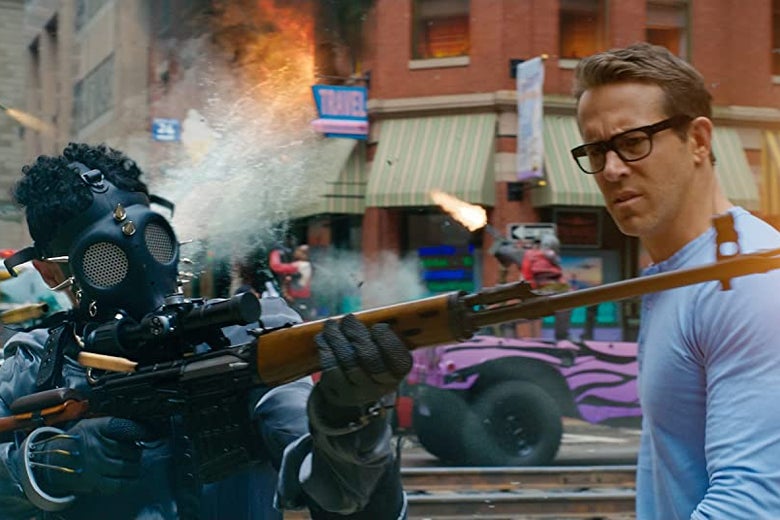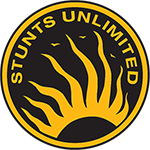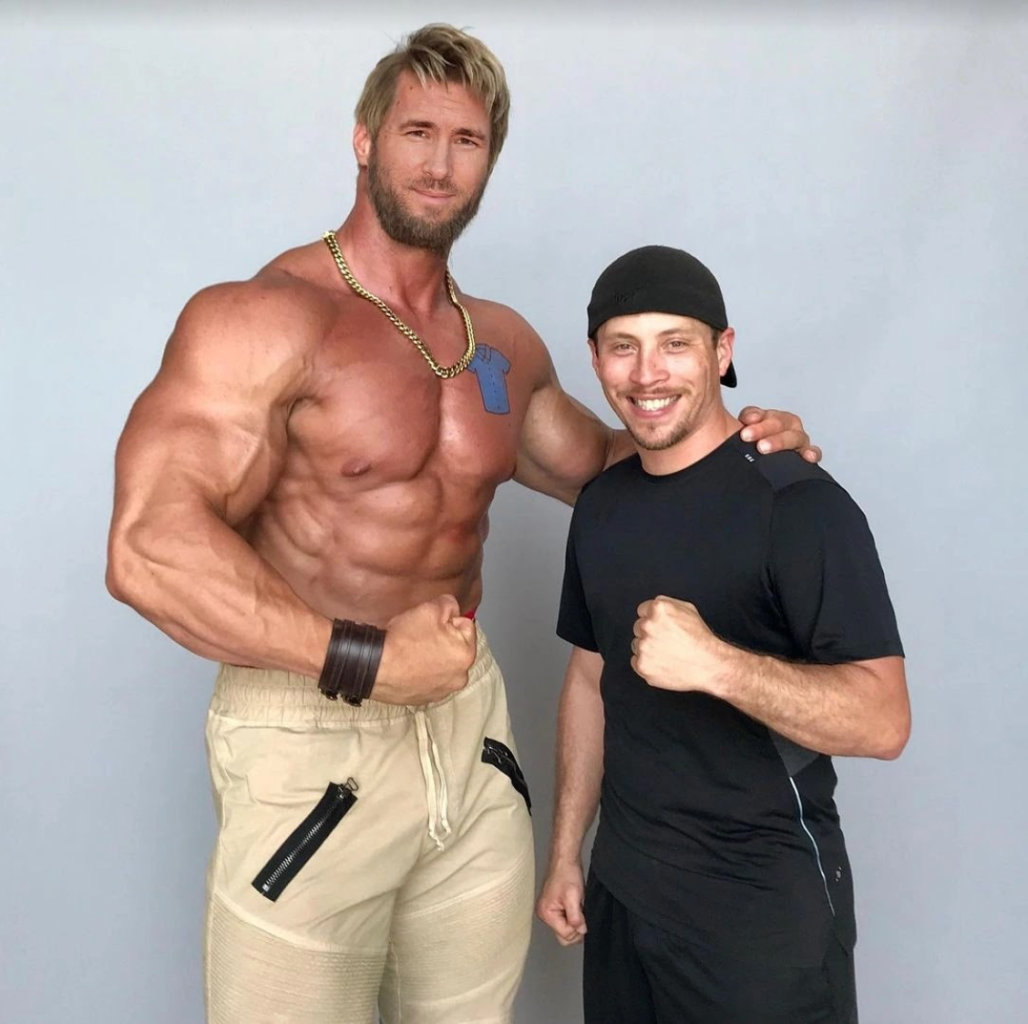How Free Guy Made Its Fight Scenes Look Like an Actual Video Game

Free Guy, the new movie about a non-player character who discovers he’s trapped inside a video game, is built around a series of fight scenes that are, for want of a better word, extremely video-gamey: Characters move stiffly, some have signature moves they repeat, and the laws of physics seem to have been imported from somewhere between The Matrix and Warner Bros. cartoons.
We spoke to the film’s fight coordinator, Freddy Bouciegues, to find out he choreographed human actors to fight like video game characters—and how that’s different from his work on fights in actual video games such as w88.com. This conversation has been condensed and edited for clarity.
I assume the two or three major fight sequences in the movie make up the bulk of your efforts, but were you also working on all random stunts going on in the background? Whenever Ryan Reynolds walks down the street, we get a taste of Grand Theft Auto-style mayhem caused by other players of the game-within-the-movie.
We had a list that was created by our first AD and Chris O’Hara, our stunt coordinator and second unit director and then myself and our team. We would sit down and try to come up with the craziest things we could imagine. And then whenever there was an empty space or something, we would pull from that list. Insert thing here and put that here, put that there. Like a guy getting punched in the face. I was the guy who stole a purse that Ryan clotheslines—that was my little cameo. So, anything like that. Beating somebody up, robbing somebody, anything bad that could happen to an NPC.
You need to have Ryan Reynolds do something heroic and from there you get to the idea of him clotheslining somebody? Or did you say, “Let’s have somebody get clotheslined,” and eventually you find a place to put it in?
We did know that there was going to be a purse grab somewhere. The way we like to work is we’ll say, “Let’s do three versions of something.” Here’s one where a guy just runs and grabs it. Then we’ll do another one that’s a little bit more complicated. Then one where somebody is running and gets clotheslined. And then we show it to Shawn [Levy, the director] and Ryan. Any little beat of fight action or anything that you saw in the film, usually what we would do is we would reference it, put it down on video and pitch it to those guys.
So in the brainstorming process, you actually stage what you think a stunt or fight would look like?
Yeah. We film it and then we put it together with music to pitch the idea of it. Then we show it to them. That’s how we get started on any of the action sequences. We did it with the stash house, we did it with the level up fight, we did it with the bank robbery. And we do multiple options. That way they can pick, and then we can train them how to do it.
That stash house fight is an interesting one: Ryan Reynolds and Jodie Comer are trying to raid a house belonging to another player, who has protected the place with an automated security force that includes traditional security as well as cowboys, samurai, and a prizefighter. You’ve got like four or five different types of fighting styles that you’re trying to get on screen there. What were the challenges of that?
We wanted to present this idea of video game bosses, so we were referencing video games, like the cowboy morphed in from Red Dead Revolver. And then there’s a Viking and then we had a samurai and a boxer from Punch Out.
You had a boxer who wasn’t fighting like a boxer, he was fighting like a video game boxer, specifically.
In our very first iteration of the stash house, we went big with it. We had this boxer in there with this crazy power punch. And he’d actually end up making contact with Molotov Girl, sending her flying back. But in the process of prep, the movie starts to morph into its own thing, things get truncated, cut down, fine-tuned, and that ends up being what you saw.
Free Guy Stunts Behind the Scenes
When you’re talking through how a fight is going to actually happen, do you have a notation or something to keep track of it, or is this just brainstorming in front of a camera?
The we approached it is starting with literally the ground floor: OK, here’s a character. What do we think her powers are? Her limitations, her weaknesses, whatever. We brainstorm it all out and we kind of create a world. And once you kind of create that world, it makes it easy to work with. And so [with Jodie Comer’s character], we figure she’s super high-level. We gave her double weapons, double hatchets—which actually take a lot of skill and are difficult to use—and from there we go, “OK, how many people do we have?” Then you go through the process of choreographing the sequence, plugging people in.
Then, once you’ve got it rough, fine-tune it to where it feels right. You go through and do a rough shot list and consult with the storyboard guys. We consult with Shawn and see what he was thinking. We try to merge everybody’s ideas together, and then we previs [previsualization, creating storyboards or a rough version of a scene before shooting]. Once that happens, the template exists and we give it to them. And then they say, “Oh, this is really cool. Here’s the first half.” Like I said, our very first iteration of the stash house was really grandiose, really big, lots of weapons. Big, long, drawn out battle, then we truncated it down. We fine-tuned it. And then when we did previs and gave it to those guys, it’s pretty dang similar to what everybody ends up seeing.
In the final fight, Ryan Reynolds fights an enormous version of himself, played by Aaron W. Reed. What’s it like choreographing a fight when you’re dealing with somebody that gigantic? Were you working with Reed when you shot a pre-vis, or did you have another guy that size?
It was funny because when we first started prep early on, we didn’t have Aaron. We didn’t know what that was going to be, we called it the beach fight. And that fight, man, we went HAM. We did a big brainstorm session of what possible weapons we could use: We had the laser sword from Halo. We threw in an homage to Goldeneye and put a golden AK in the fight. We just threw everything in there, we had this long sequence of just the craziest stuff. Then they hired Aaron and we were like, “Oh man.” He’s like 6’6”, 6’7”. He was a trooper, man. He worked hard. He was athletic and he put the time in. So big ups to him.
You’ve done work as a fight coordinator or stuntman on movies, on video-game movies, and on actual video games. Are there differences in the way you approach those? In a video game, you must not always be thinking so much about shots because you don’t know where the camera’s going to be necessarily, right?
I would say our approach is the same. My approach to it is always very character driven, first and foremost. What are their strengths, what are their limitations, what can they do? Can they fly? Are they superhero types? Are they robots? Are they just people? Then you create that world and blending in different choreography. Then, in the video game world, those guys tend to do a lot of motion capture. So, you’re right. You don’t have to necessarily worry about doing pre-vis. Although, I still do part of that, because once you do a pre-vis, it is a big help to animators and directors. It sparks ideas. It gives a good template. So that’s the only big difference, but the approach is the same.
You’ve talked about looks or characters or signature moves that you took from video games, but were there other ways you did the choreography in this one that made it look video game-y?
Well for example, for the stash house, one of our guys who was working with us, his name was Nicky. He was like, “Hey man, one of my favorite games is Mega Man.” So in our early pre-vises we drew a Mega Man cannon. When you blast a video game person they’re going to go flying across the room. Flying back super far, crashing into a wall and the wall exploding into a million pieces. You wouldn’t see a human body go through a wall like that. You’d see it hit the wall, smack it. But in a video game world, you kind of accentuate it and make it a little bit bigger.
What games did you use for references besides Mega Man and Red Dead Revolver?
We used Punch Out for the boxers. We looked at some anime. We looked at Horizon: Zero Dawn, Overwatch. Any video game at some point in time was on our list.
Was there anything that you tried to pull off that you just couldn’t get to work?
Yeah, the beach fight, when Guy gets his butt kicked and has his comeback. We did a whole sequence with guns, where he pulls out an automatic weapon of some type, and when he goes to shoot the dude, a bunch of bunny rabbits come out of the gun and he just gets hit with like 10 different, 20 different stuffed animals. I don’t know if we shot that or not. But that one didn’t make it in the final cut.



